The first of our blue tits successfully fledged last week! And, many more nestlings are ready to go — won’t be long now!
#ukbirding #phenology #ornithology #birds
21.05.2025 13:11 — 👍 6 🔁 0 💬 0 📌 0
Great - thank you. Hope your season is going well in Wytham.
18.05.2025 19:50 — 👍 0 🔁 0 💬 1 📌 0
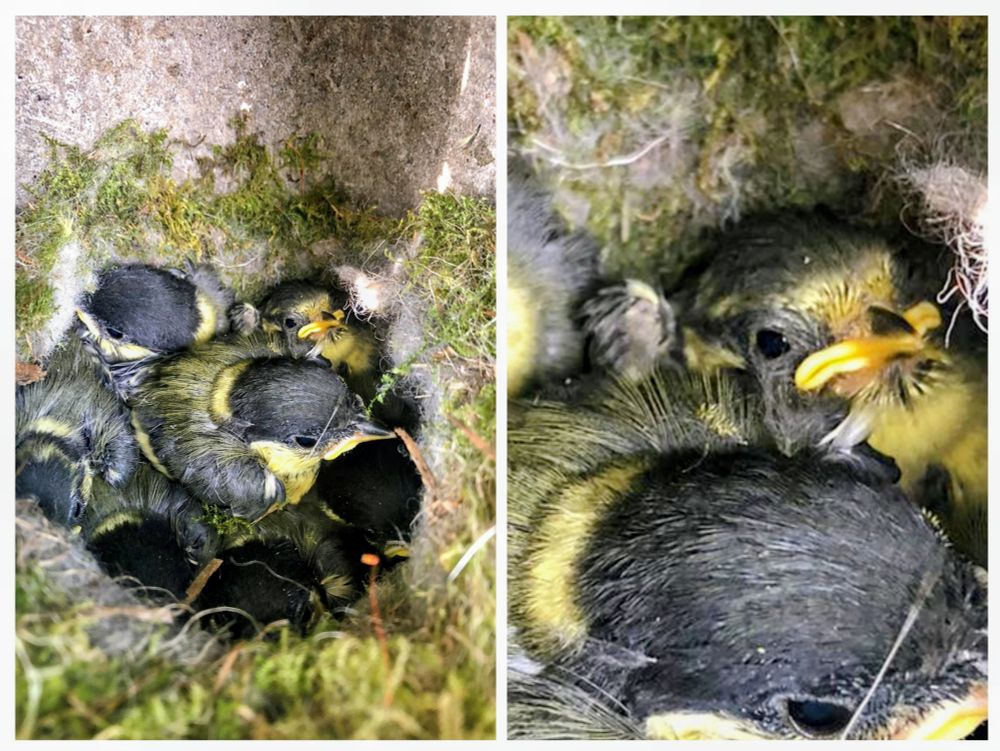
2 photos of a tit nest
The first picture is of some great tits and two blue tits in a nest box.
One blue tit is far left with head down, the other top right corner looking at the camera. The rest of the birds are great tits.
The second picture is a close of the blue tit chick looking sheepish
Freeze frame. Record scratch. You might but wondering how I got here.
The eagled eyed among you might notice that there are 2 blue tits in amongst this brood of great tits.
Mini 🧵
18.05.2025 10:56 — 👍 34 🔁 6 💬 2 📌 1
Do you know how much heavier they tend to be around fledging compared to blue tits reared by blue tit parents?
18.05.2025 14:46 — 👍 3 🔁 0 💬 1 📌 0
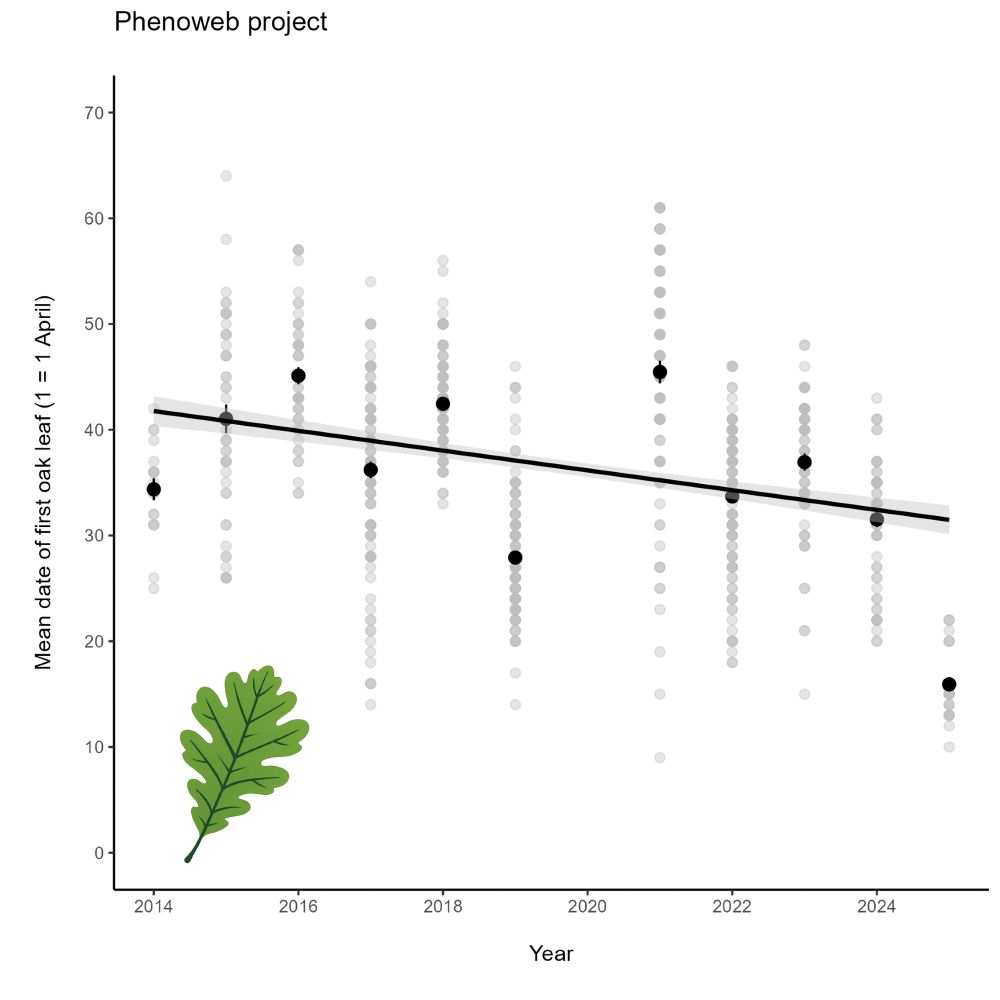
The change in date of the first oak leaf. Black points represent the mean (+/- SE) first oak leaf date in each year, across all oak trees studied on our transect across Scotland (with day 1 equal to the 1 April). The light grey points represent the first oak leaf date for individual trees. The regression line represents the estimated mean (+/- 95% CI).
Although we're still collecting this year's data, 2025 is shaping up to be a record-early year for first leaf emergence among many of our studied tree species — including oaks! 🌳
#phenology 🍃
23.04.2025 12:23 — 👍 6 🔁 0 💬 0 📌 0
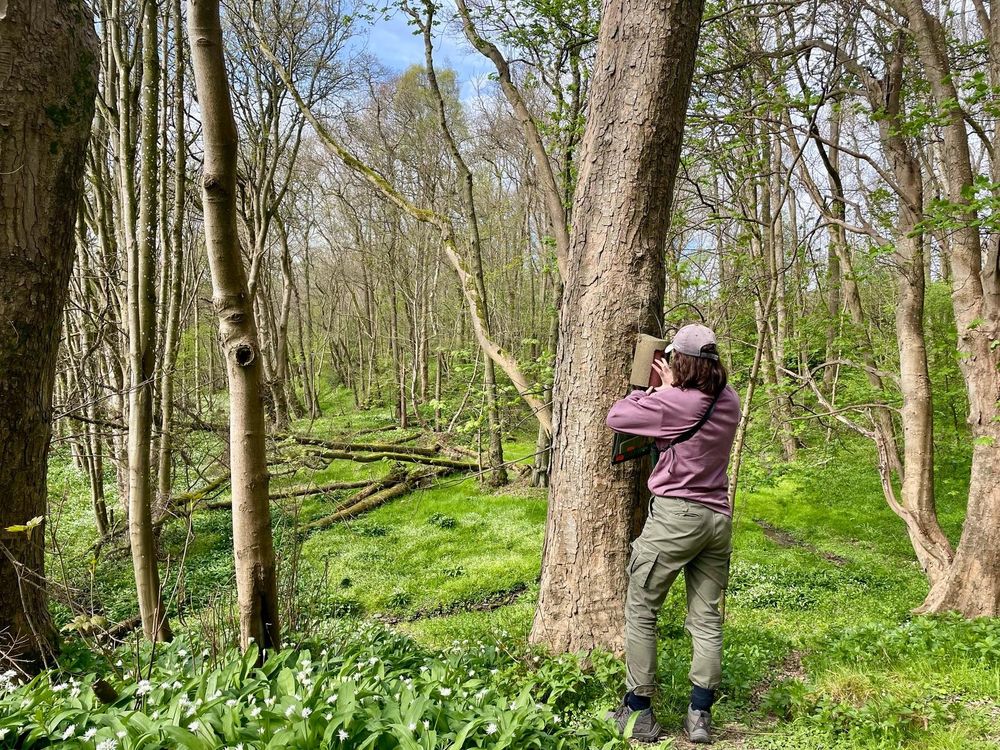
One of our Field Assistants, Charlotte, checking on the progress of a blue tit nest inside of a woodcrete nest box that is attached to a tree.
Photo: Megan Thompson
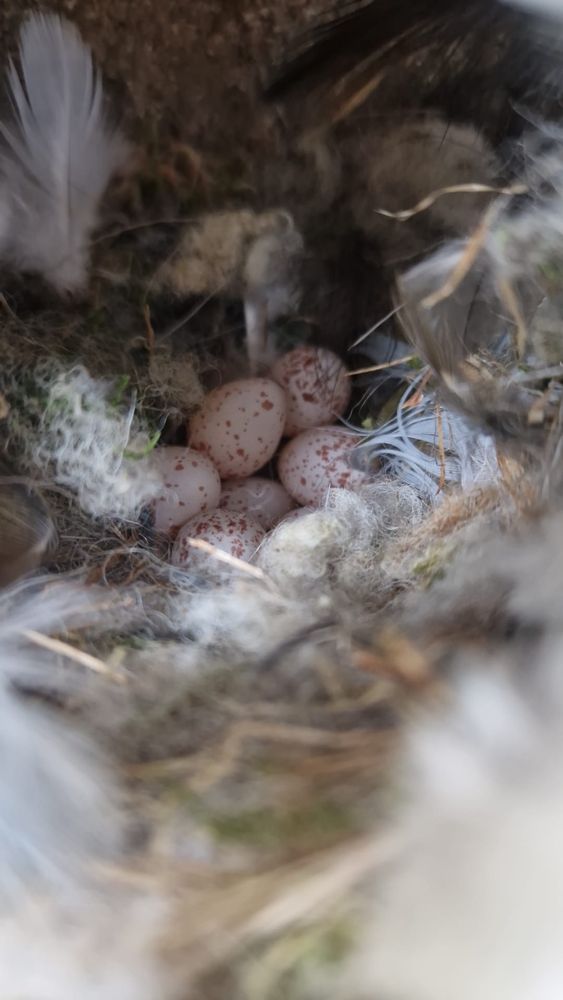
A clutch of 7 blue tit eggs in a nest in a woodcrete nest box.
Photo: Ally Phillimore
Happy Easter weekend to all who celebrate!
While you're out hunting for chocolate eggs, our team is busy monitoring the breeding progress of our blue tits. 🪺
As of today, we have eggs in 73 nests, with several females already incubating. In contrast, on this day last year, only 2 nests had eggs!
19.04.2025 15:35 — 👍 10 🔁 2 💬 0 📌 0
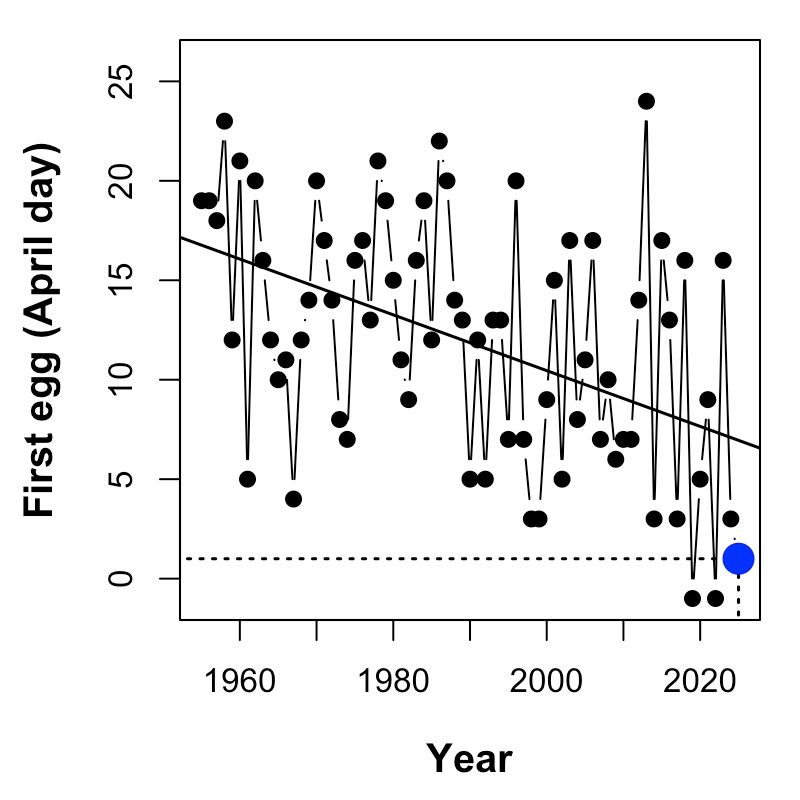
A plot the date of the first great tit egg on Vlieland against year showing 2025 is the third-earliest year since 1955.
Last year I posted too early and had to retract my post 🫣, but now that all @niooknaw.bsky.social @animalecol-nioo.bsky.social nest boxes on #Vlieland have been checked, we know for sure that it is - yet again - a very early start of the breeding season! @uniexecec.bsky.social @sevans.bsky.social
15.04.2025 17:57 — 👍 46 🔁 9 💬 1 📌 0
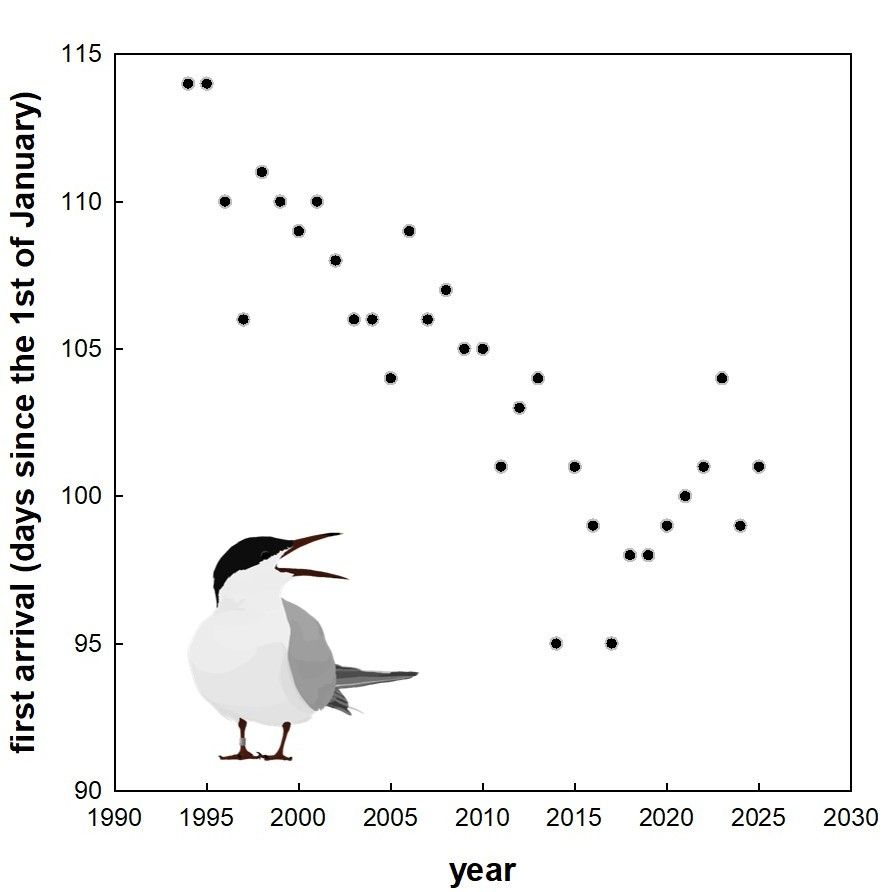
They're back! The first three terns arrived yesterday morning. The very first one was 18-year old Calimero. He was followed by 7-year old Severina and 13-year old Fabrice. All arived between 10:29 and 10:54. ♥️ #phenology #seabirds
12.04.2025 18:41 — 👍 87 🔁 14 💬 0 📌 2
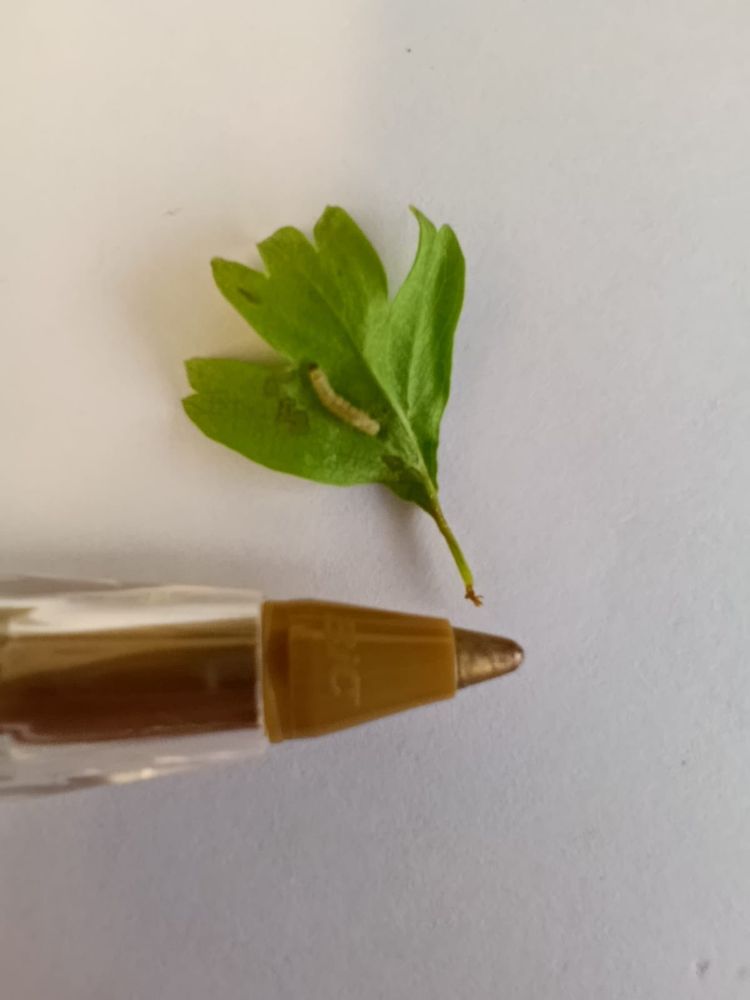
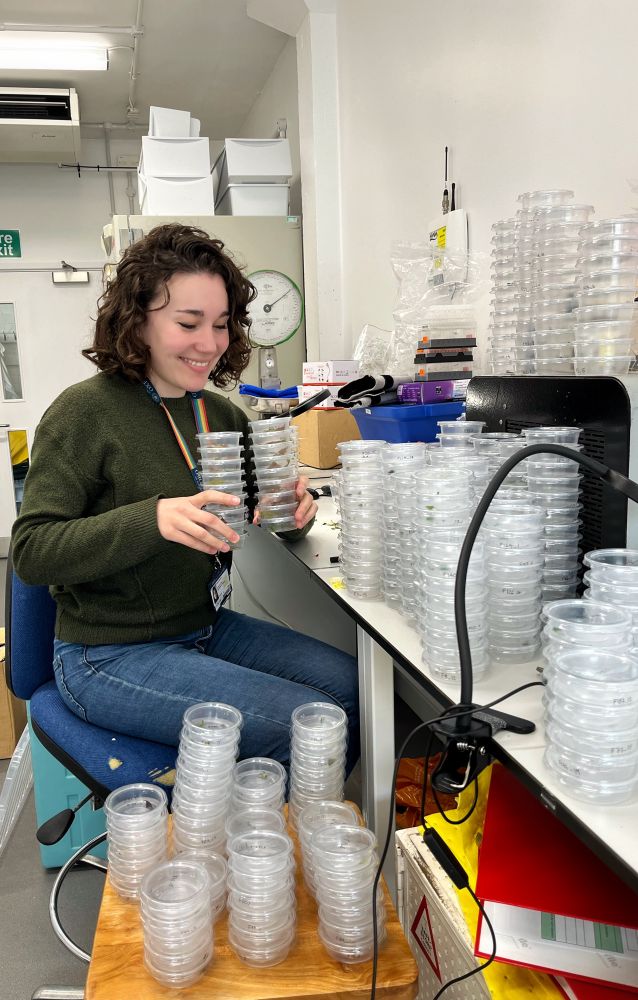
Proud mum to 936 hungry winter moth caterpillars 🐛 with 500 more on the way! Wish me luck
11.04.2025 15:58 — 👍 22 🔁 2 💬 0 📌 0
First Blue tit egg at East Dartmoor was April 4 2025. There are 3 earlier lay dates since mid-1950s, all in 2019. Probably about 1 in 8 pairs have started laying - much the same pattern as in 2019. Suggests we can expect first Pied Flycatcher eggs 2 weeks from now. #phenology
09.04.2025 20:42 — 👍 9 🔁 1 💬 0 📌 0
Yeah, March 4th is incredible. Was it an outlier, or were other birds soon after?
09.04.2025 20:31 — 👍 0 🔁 0 💬 1 📌 0
It's an incredible honour to be awarded the John C. Marsden medal from the @linneansociety.bsky.social for my PhD research on phenology, moths... and some very hungry caterpillars 🌳🐛
Thanks to all my friends and mentors at @edinburgh-uni.bsky.social, but especially @allyphillimore.bsky.social!
09.04.2025 11:04 — 👍 29 🔁 4 💬 2 📌 0
@egioxford.bsky.social in this instance, the nest box is just next to a horse paddock!
09.04.2025 16:30 — 👍 0 🔁 0 💬 0 📌 0

A single blue tit egg in a nest inside a woodcrete nest box.
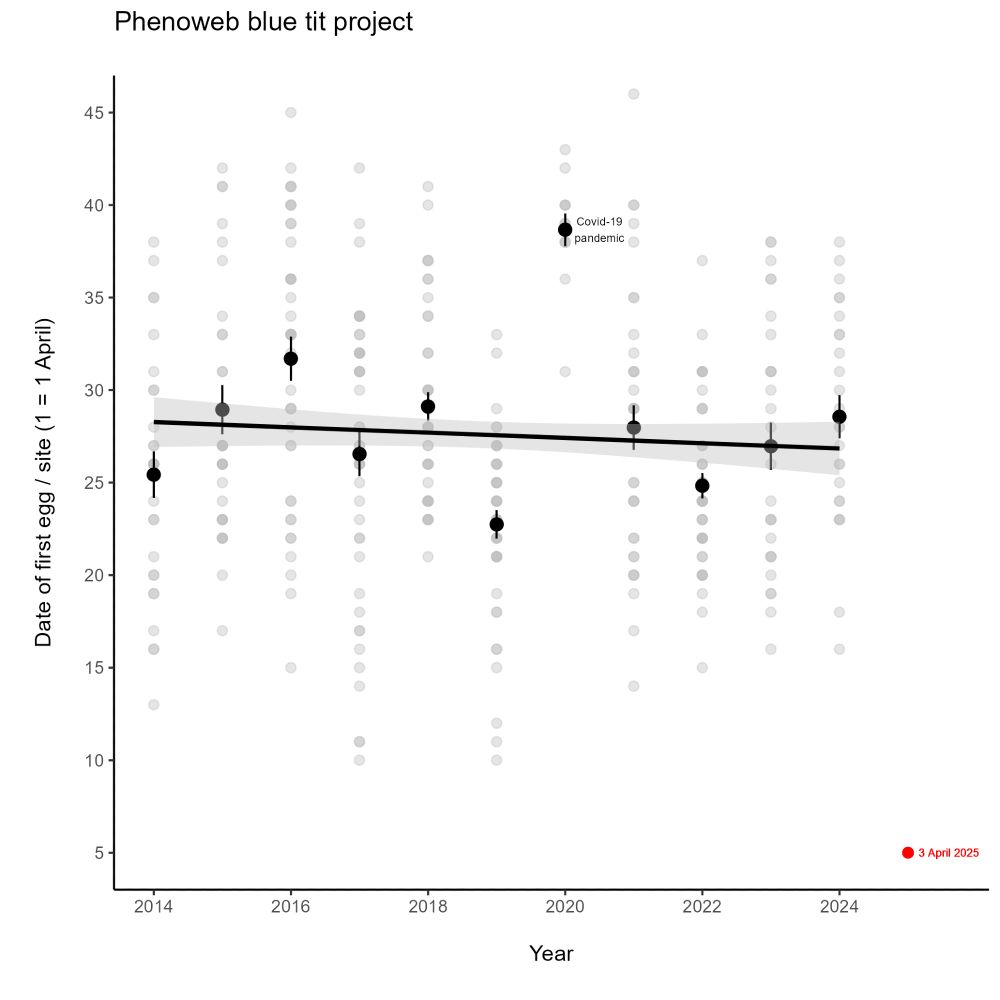
The change in date of the first blue tit egg in the Phenoweb project population. Black points represent the mean (+/- SE) first egg date in each year, across all sites on our transect (with day 1 equal to the 1 April). The light grey points represent the first egg date at each individual site. The regression line represents the estimated mean (+/- 95% CI) and is fitted through data from 2014-2024. The red point represents the date of our first egg found in the current 2025 season.
And we're off! Our first blue tit egg was laid on 3 April 2025 - making this, by some margin, the earliest start to a season in the 12 years of our project! 🪺
#phenology #ukbirding #ornithology 🪶
09.04.2025 15:38 — 👍 20 🔁 4 💬 1 📌 1
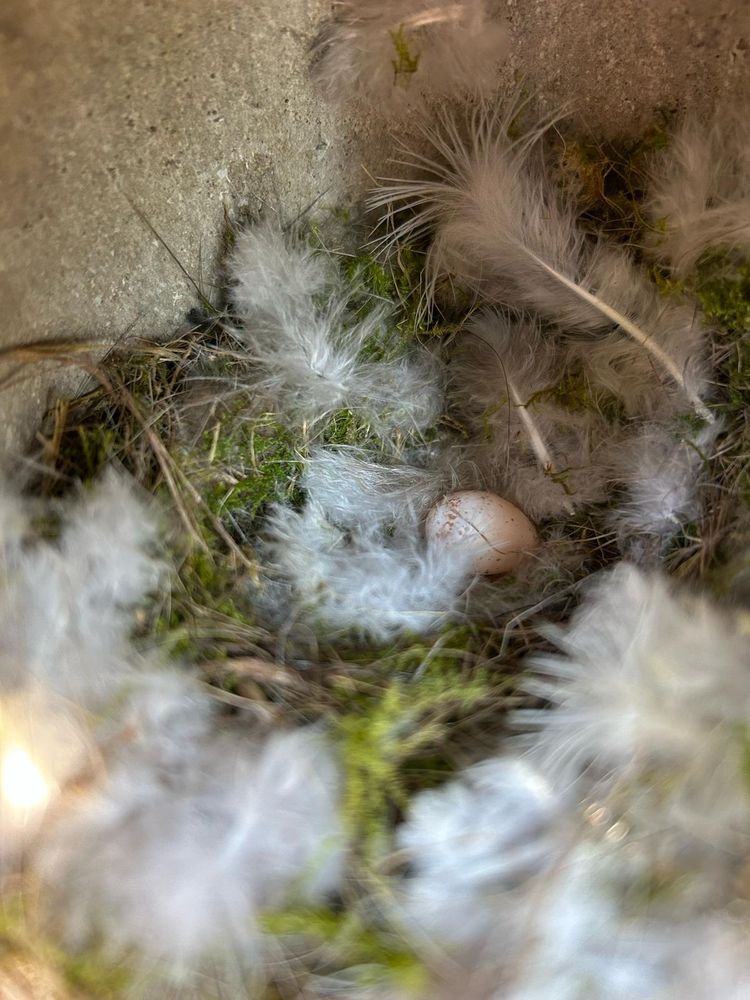
A single Blue Tit egg in a complete nest inside a woodcrete nestbox in Wytham Woods, 3 April 2025
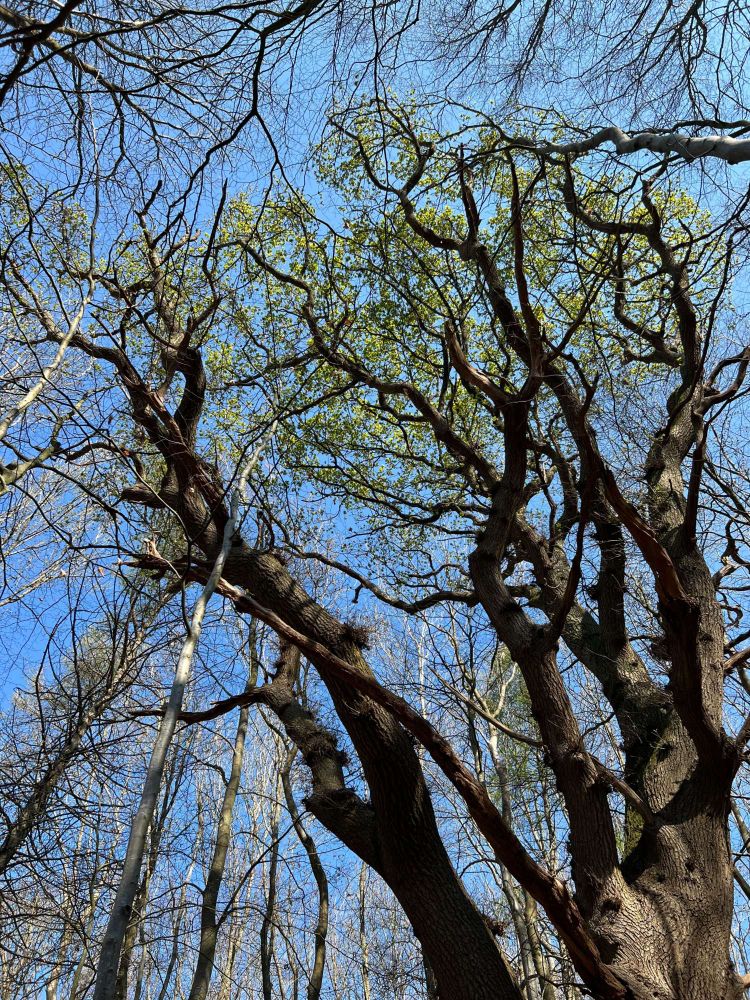
Early developing Oak in Wytham Woods, Oxfordshire, April 2025
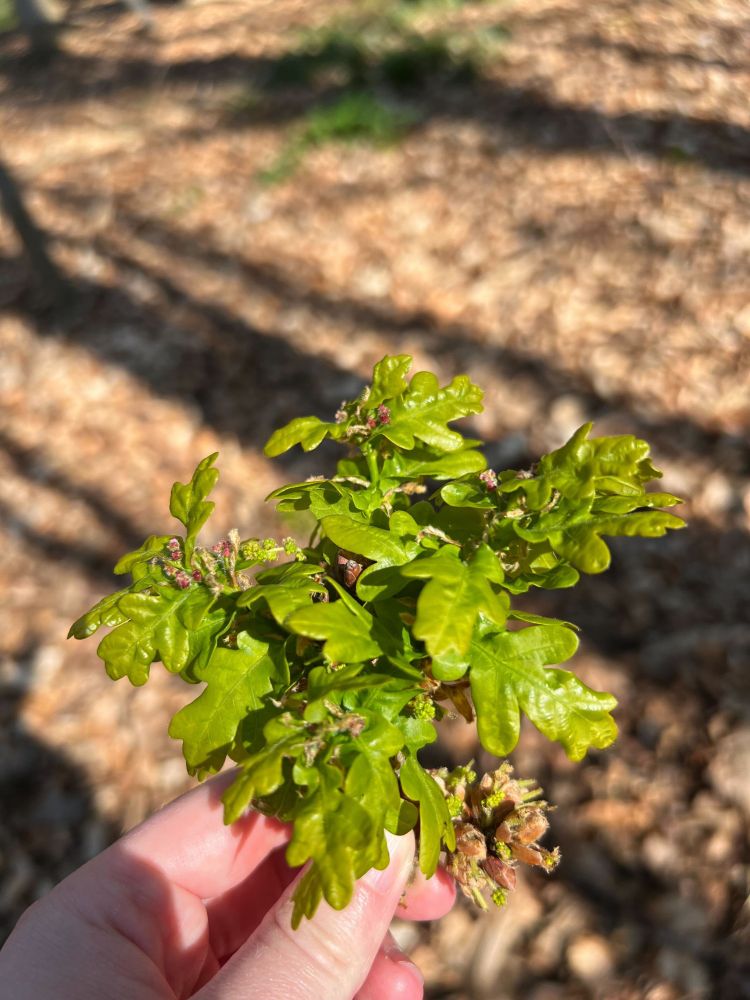
Newly emerged Oak leaves, Wytham Woods, near Oxford, 3 April 2025
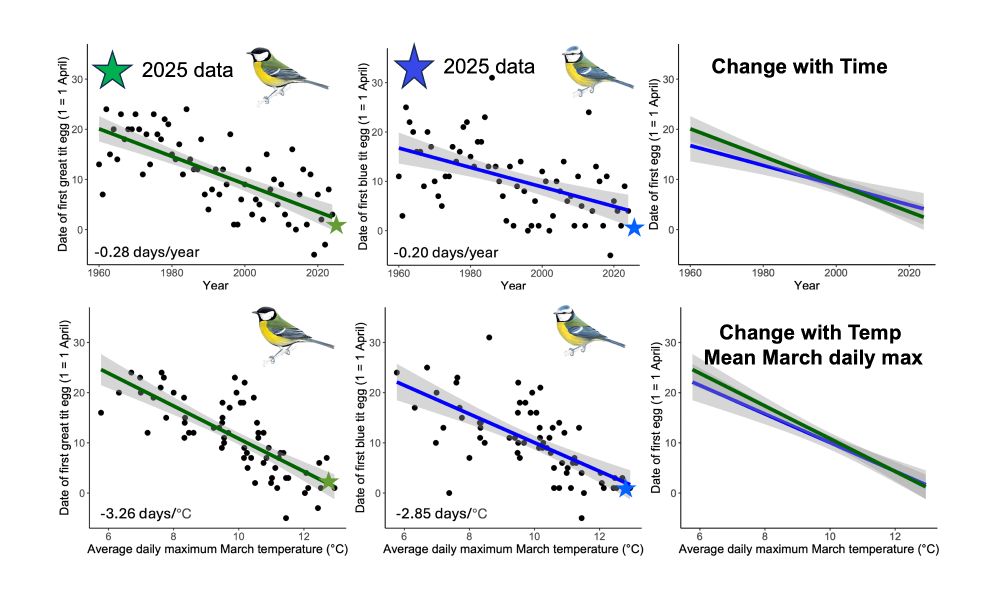
Figures showing the change in the date of the first egg in the Great Tit and Blue Tit populations at Wytham Woods, near Oxford 1960-2025, and the relationship between average March daily maximum temperature and date of the first egg in the population for each species. In each figure the line fitted is for the data for the 65 years from 1960-2024, with the value for 2025 shown as a green (Great Tit) or blue (Blue Tit) star. The two right hand panels compare the change over time and the response to March temperature in the two species; Great Tits show a slightly steeper response to temperature than Blue Tits, and are advancing the population first egg date slightly more quickly.
The first eggs have been laid in this, the 79th year of data collection in the Wytham Tit Project! First Blue Tit egg laid 2 April, first Great Tit 3 April. Looks like an early spring, with first oak leaves out, though the observed first egg dates fit the long-term pattern well
wythamtits.com#intro
03.04.2025 21:11 — 👍 41 🔁 8 💬 0 📌 2
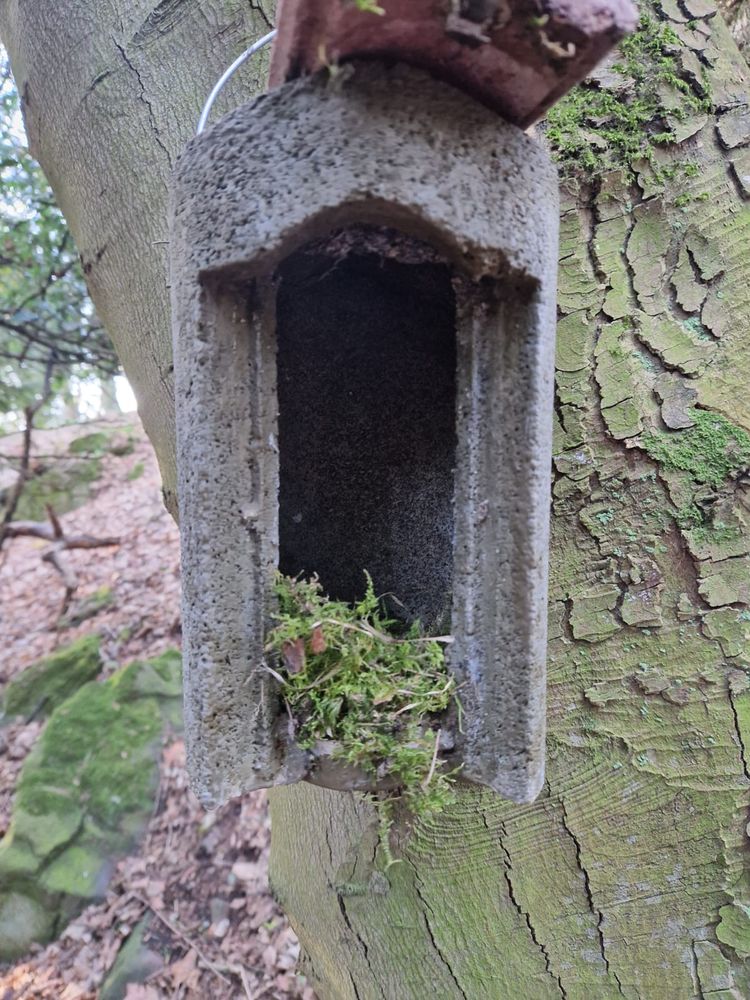

Looks like being a very early spring for us. We already have over 60 blue tit nests and didn’t reach similar numbers ‘til around April 10th last year. This sycamore is already in leaf, and last year it didn’t reach a similar stage for another three weeks. When will we get our first eggs?
02.04.2025 18:46 — 👍 13 🔁 2 💬 1 📌 0
Analyst of collective movement and social networks of living dinosaurs. Discoverer of multilevel societies. Watcher of fishers and dolphins. Modeller of emergent phenomena. Eccellenza Prof @ Uni Zurich and A/Prof @ Australian National Uni. ERC grantee
Associate professor at the University of Debrecen, interested in birds, hormones & behaviour, and mechanisms of life history evolution.
PhD Researcher at City University of Hong Kong|📚 Studying the Behavior and Associated fauna of feral bovids 🐃|🌿 Passionate about wildlife ecology, animal behaviour, and conservation
PhD student at ANU (Ecology and Evolution) studying social behaviour of superb fairy-wrens
MSc in Biogeosciences, BSc in Natural Sciences @LaStatale, Milano
#birds #animalbehaviour #sociality
https://scholar.google.it/citations?user=jgsCs8kAAAAJ&hl=it
Behavioral ecologist @ the University of Debrecen, Hungary
PhD student studying bird evolution 🦜🦋🧬evolution, genomics, conservation
Post Doc at Uni of Glasgow testing alterative hypotheses of ageing in wild crickets
PhD looking at the impacts of urbanisation on avian health
Forest ecology, ornithology, molecular and microbial ecology 🐦🦠
BTO C Ringer
She/her
PhD from UMCES Appalachian Lab, now postdoc! Bird migration ecology, phenology, impacts of free-roaming cats | #BlackLivesMatter | she/her | clairenemes.weebly.com
Associate Professor of Evolutionary Ecology at the University of Exeter (Cornwall). Interested in the ecology & evolution of health and disease, life history evolution, cross-generational effects, and more. 🐭🐣🐦🦡🦟🦠🧪🧬🌻🐈🐓⛰️
Researcher @uniLeipzig.bsky.social & @rsc4earth.bsky.social
My work: #PHENOPLEXITY
= #nonlinearDynamics + #complexity + #ML
Analyses: plant #phenology & #biodiversity.
Data: #citizenscience, #remoteSensing, #sentinel2, #eddycovariance, #DataCubes
NSERC postdoc fellow @ Univ Edinburgh
Evolutionary ecology, especially in cities
https://scholar.google.com/citations?hl=en&user=RQV7cXwAAAAJ
Honorary Research Fellow at the BTO studying avian abundance, migration and demography at large spatial scales. President of EURING and lead author of its Migration Atlas ( https://migrationatlas.org ). Bird ringer and BirdTracker. Views are my own.
Botanist | Assistant Professor & Curator | Natural History Museum Denmark | Science & Society
plant phenology & traits, herbaria, digital museum collections, citizen science, lychophytes, graminoids, peatlands, arctic plants, wild food plants
Ecologist interested in species behavioural responses to changing environments | Based at University of Glasgow and Edinburgh Napier University | A Permit British Trust for Ornithology bird ringer | She/Her
Evolutionary ecologist striving for better science. Meta-analyst & Meta-researcher. Principal Investigator @ Bielefeld University. Board of Directors of SORTEE (@sortee.bsky.social). Receiving & Data Editor
@Ecology_Letters. M 2:37, HM 72:49, FTP 4.45W/kg
Ecological forecaster aiming to predict population responses to changing environments. Chancellor's Fellow at University of Edinburgh
Associate Professor in Environmental Physiology, University of Jyväskylä. Eco-evo, ecophysiology, molecular ecology, host-microbiome, ecotoxicology research. Editor in Oecologia and J Avian Biol, NSO board member.
Master student in Evolutionary Biology. Lund University + University of Helsinki. Freelance Ornithologist.
















